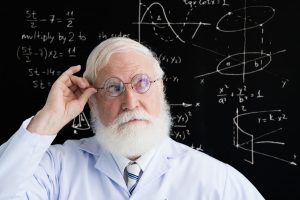 If you ask scientists what causes aging, you’ll probably get several different answers. Longevity experts are exploring different theories of aging in pursuit of answers.
If you ask scientists what causes aging, you’ll probably get several different answers. Longevity experts are exploring different theories of aging in pursuit of answers.
The most popular opinion seems to be that we don’t die of old age, but of diseases. Which makes me want to know, why do seniors get so many diseases? There must be some underlying cause that puts us at risk as we age. What makes us vulnerable to disease?
Here’s another big question: why do some people age faster than others? Heck, an even bigger question: why do some body parts age faster than others? (Example: I have young hair but a cranky old gut.)
This article summarizes what I’ve been learning about the theories of aging from one particularly good book, The Longevity Solution: Rediscovering Centuries-Old Secrets to a Healthy, Long Life by Dr. James DiNicolantonio and Dr. Jason Fung.
Theories of Aging
Disposable Soma Theory: According to Wikipedia, The disposable soma theory of aging states that organisms age due to an evolutionary trade-off between growth, reproduction, and DNA repair maintenance. Formulated by Thomas Kirkwood, the disposable soma theory explains that an organism only has a limited amount of resources or “soma” that it can allocate to its various cellular processes.
Therefore, a greater investment in growth and reproduction would result in reduced investment in DNA repair maintenance, leading to increased cellular damage, shortened telomeres, accumulation of mutations, compromised stem cells, and ultimately, senescence. Depriving animals of food causes them to allocate more resources to fighting aging. This theory fits some facts but has some problems. As a theory of aging, it is either incomplete or incorrect.
Free Radical Theory: Biological processes generate free radicals, molecules that can damage surrounding tissues. Cells neutralize them with antioxidants, but this process is imperfect, so damage accumulates over time and cause the effects of aging.
Supplementation with antioxidant vitamins like vitamins C and E may increase death rates or result in worse health. Some facts contradict the free radical theory; it is incomplete or incorrect.
Theories of Aging: Mitochondrial Dysfunction
The mitochondria are organelles with their own DNA, passed down from only the mother, and they are often called the powerhouses of the cells. They convert the components of macronutrients into energy. (ATP is turned into AMPK and fuel) In the process, their DNA sustain a lot of molecular damage so they must re recycled and replaced periodically to maintain peak efficiency. Cells undergo autophagy: mitochondria have a similar process of culling defective organelles for replacement, called mitophagy (emphasis on second syllable, the “toe” sound. When the mitochondrial DNA accumulates damage over time, it becomes less-efficient which in turn produces more damage in a vicious cycle. Without adequate energy, cells may die which is a manifestation of aging.
Muscle atrophy is related to high levels of mitochondrial damage. The research to support this theory of aging is preliminary and ongoing and arguments can be made both for and against it.
Theories of Aging: Hormesis
Hormesis is a phenomenon in which low doses of stressors that are normally toxic instead strengthen an organism and make it more resistant to higher doses of the same toxin or stressor. Hormesis is not a theory of aging but it has huge implications for other theories. Low doses of a toxin makes you healthier and able to withstand higher doses.
Exercise is an example. When you work out, you injure the muscle with tiny tears to the fibers. The muscle then goes through a repair cycle, leaving the muscle stronger than it was before. Weight bearing exercise stresses the bones, causing the body to increase bone strength.
Calorie restriction is considered a stressor because it causes a rise in cortisol, the stress hormone. This rise in cortisol increases the production of heat shock proteins, a family of proteins that help to stabilize new proteins or repair damaged ones. It results in more resistance to subsequent stressors. Exercise and calorie restriction are both forms of stress and they involve the production of free radicals.
Some of the beneficial effects of foods may be due to hormesis. Polyphenols are compounds in fruits and vegetables as well a coffee, chocolate, red wind. They improve health possibly by acting as low-dose toxins, upregulating your body’s natural endogenous antioxidant enzymes.
The phenomenon of hormesis shows that the body has potent damage-repair capabilities that can be beneficial when activated. Hormesis has plenty of evidence that it’s a true biological response to small doses of damage.
I hope this doesn’t come across as academic. Understanding these theories helps us understand ways we can slow down the aging process and avoid some diseases through food and exercise.
When it comes to theories of aging, however, there are more than what I’ve written here. But these are basics. But of course, there’s more to come…! Stay tuned.

Recent Comments